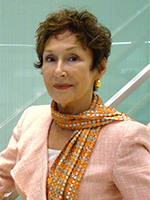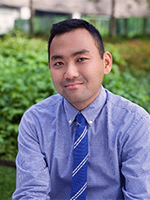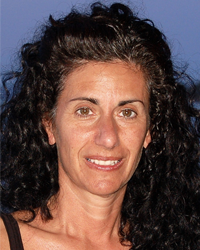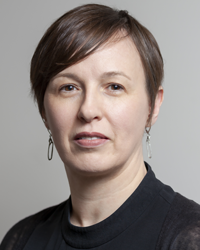This post is part two of three blogs running across the next few weeks concerning the issue of obesity and Indigenous populations. A series of conversations with Indigenous people culminated in three fact sheets (Fact Sheet 1; Fact Sheet 2; Fact Sheet 3), which will be used at a Hill Day in Washington, DC, in May to advocate for better care for obesity for everyone, but specifically for Indigenous elders.
One of the largest tribes in the country is the Navajo Nation (Dine’). The worldview of the Navajo is beautiful, complex and wise. An important word in Navajo is Hózhó, a concept understood as seeking balance or harmony in a person’s life—in their thoughts, behaviors, speech and action. Elders may advise their children to keep both positive and negative aspects in balance and have insight into not allowing one side or the other to dominate. Also important is not to let unimportant concerns outweigh important, deep matters that require our attention to create a meaningful life.
In modern-day America we have fallen out of balance in many ways, our relationship to food being one important element. Native peoples across Indian Country are aware of this problem. In the fall of 2023, more than 40 American Indian elders, service providers and researchers joined the American Society on Aging during a series of roundtables (one at the National Indian Council On Aging Conference in Cherokee, NC) to share knowledge, data and personal experiences on the subject of obesity.
The Havard T.H. Chan School of Public Health reports that the United States has one of the highest obesity rates among all high-income countries in the world. The World Health Organization defines obesity as abnormal or excessive fat accumulation that presents a risk to health, determined by a person’s body mass index. Having excess weight can put a person at risk for developing other health issues over their lifetime. For Native peoples this can lead to high blood pressure, high levels of blood fats, diabetes and LDL cholesterol, all of which are risk factors for heart disease and stroke.
Obesity is viewed as a lifelong, intergenerational issue.
An analysis of American Indian/Alaska Native (AI/AN) patients ages 50 and older receiving care at Indian Health Service (IHS) facilities shows that women were more likely to be obese than men. Those with private health insurance also had higher odds of obesity. Other factors, including living in areas of lower educational attainment, and with longer drive times to primary care services also contributed.
The primary conclusions of the roundtable discussions were that obesity is viewed as a lifelong, intergenerational issue and cannot be addressed without consistent and equitable access to healthy food, transportation to service providers, and healthcare services that are delivered with cultural appreciation and trust. There is great variance in resources between tribal communities, making treatment for obesity difficult to assess and solve for, plus many elders feel that even their most basic needs are not being met. Roundtable attendees expressed the wish to have full access to all care options, and the ability to integrate traditional healing practices with Western care.
Below are more observations from the roundtable contributors.
Disconnect from Tradition Contributes to Obesity
Over time, some communities have felt a loss of connection to nature, to traditional foods, and to spiritual aspects of health, which have directly led to poorer health. Indigenous methods of hunting and gathering have been severely limited due to land restrictions and climate change. Specifically, elders mentioned less access to traditional foods, and limits on the quantity of deer harvested or fish caught. They also mentioned sourcing locally grown and cultivated foods as a way to provide nutritional meals that align with traditional values.
On the flip side they spoke of a deep spiritual connection to nature, which spurs their commitment to environmental protection, including safeguarding the environment and contributing to climate preservation. Also worry about the future as health is tied to, as one participant said, “how my water is, how my air is that I’m breathing, the foods I’m eating and how my community is doing.”
Access to Healthy Foods and Transportation Are Persistent Barriers to Health
Commodity foods provided through U.S. government programs have become an unhealthy but preferred staple in the community and are now considered the norm. Many elders have very low incomes and or no access to transportation, making it difficult to access healthy food and community supports.
The Food Distribution Program on Indian Reservations (FDIR) aims to “increase access to healthy foods in Indian country,” but also, the FDPIR uses foods available from the 2024 commodity food list that heavily relies upon canned and processed goods.
Participants spoke of a deep spiritual connection to nature, which spurs their commitment to environmental protection.
Despite the expectation that the Indian Health Service (IHS) would fully meet the healthcare needs of Indigenous elders, insufficient funding, lack of insurance coverage and limited access for American Indian elders living outside reservations lead to healthcare challenges and financial burdens.
These comments reflect the lived experience of many who have struggled to live a healthy life and break generational patterns contributing to obesity. Tribes are looking for ways to improve the health of their citizens and bring back traditional approaches to diet.
The Alaska Division of Environmental Health Food Safety and Sanitation Program and the Alaska Native Medical Center are just two organizations that acknowledge the healing power of food in peoples’ health.
The Alaska Food Code allows the donation of traditional wild game meat, seafood, plants and other food to institutions or nonprofits. Elders crave traditional foods. Especially if they live in a facility that may be far from home, having a traditional meal prepared with care is a comfort.
A beautiful expression of the power of Indigenous foods and medicine can be found on the Native Plants & Foods Story Map page. This project is a partnership between the Swinomish Community Environmental Health Program, Feed Seven Generations, GRuB Wild Foods and Medicine Program, and Urban Indian Health Institute.
These examples highlight a search for balance across Indian Country and a desire to take charge and resist the pressures to eat unhealthily. There is a joyous excitement seen in the work people are engaged in as they rediscover old ways and find new ways to share their knowledge.
Rebecca Owl Morgan is a member of the Eastern Band of Cherokee Indians and project coordinator for the National Indian Council On Aging in Albuquerque, NM.









